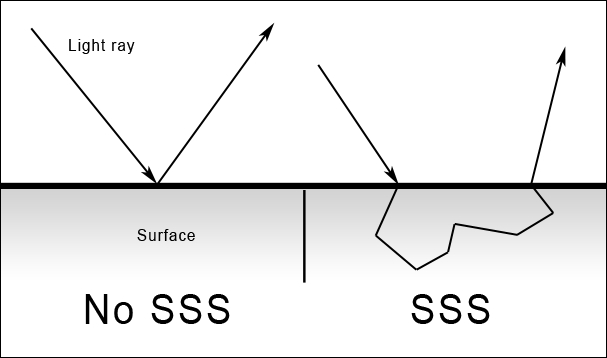Creating advanced materials in Cycles
We already covered material creation with Cycles in the Haunted House project, but now we are going to go further by creating a skin material using subsurface scattering, a complete fur, and an eye material. Let's start!
Skin material with Subsurface Scattering
The skin has a very translucent aspect. We can truly see this effect when we pass our hand in front of a lamp or in the thin part of the ear (the helix). So, when creating a skin material, we get this phenomena with a Subsurface Scattering node (usually abbreviated SSS). It is called this because the light rays are scattered through the geometry when intersecting the mesh. This is not the case with a diffuse shader, for instance, as the light rays are simply blocked. SSS often gives a reddish tint to the thin parts where light rays scatter a lot. So let's create the skin material of the rat.

The way light rays react on SSS surfaces
We will open the
RatCharacter.blendfile and split our interface so...























































